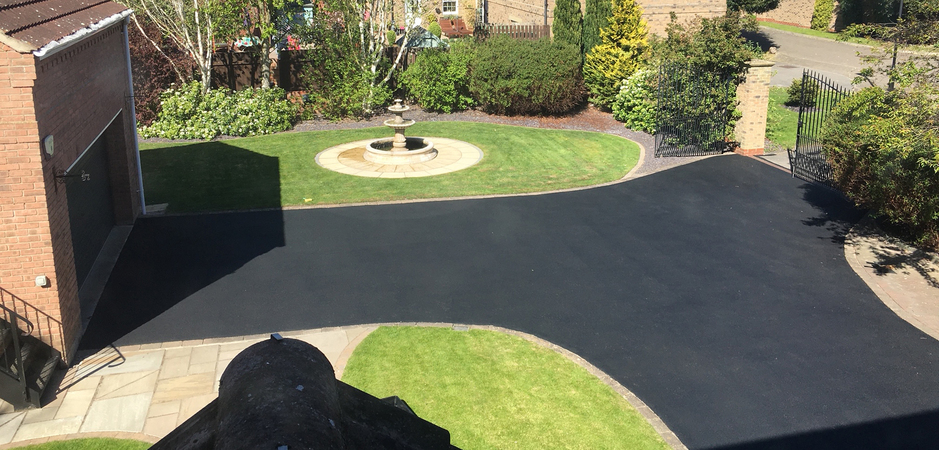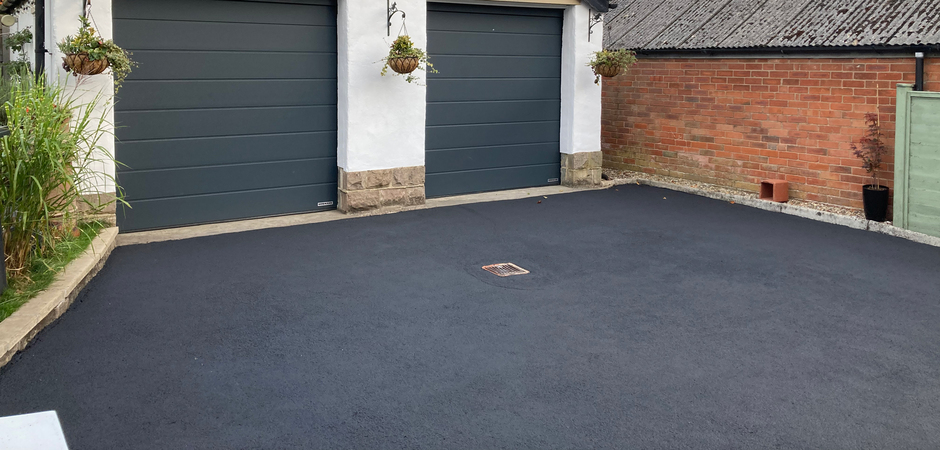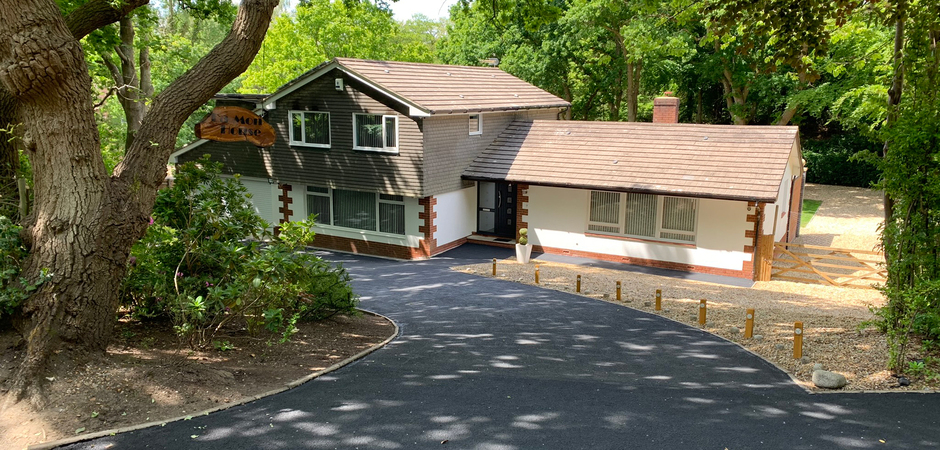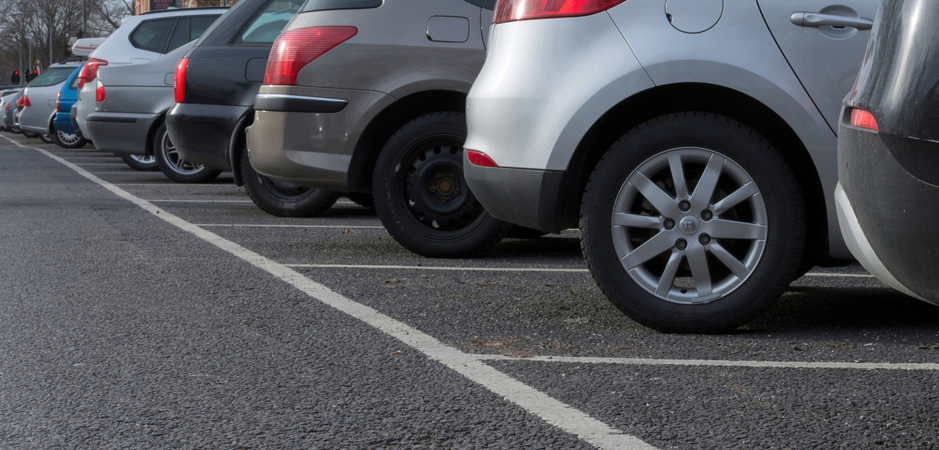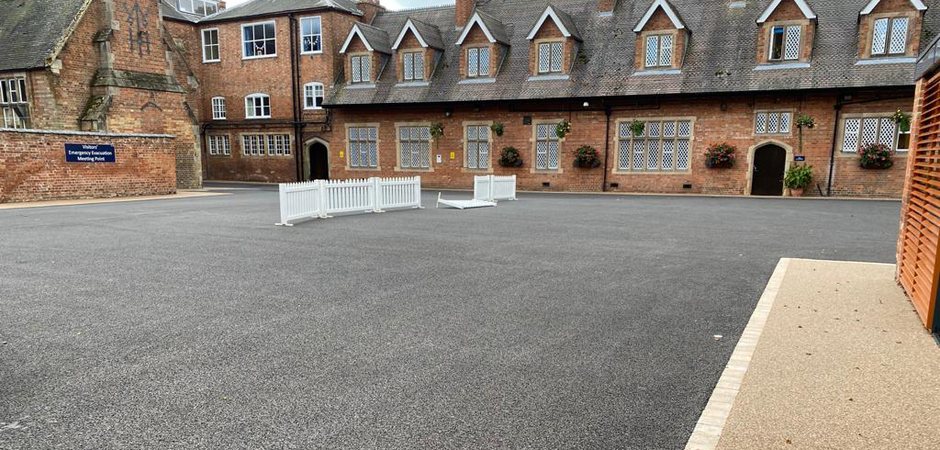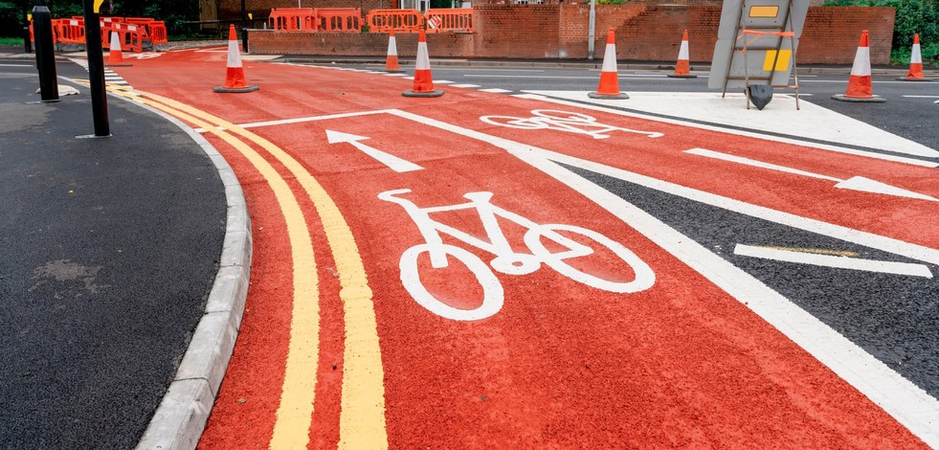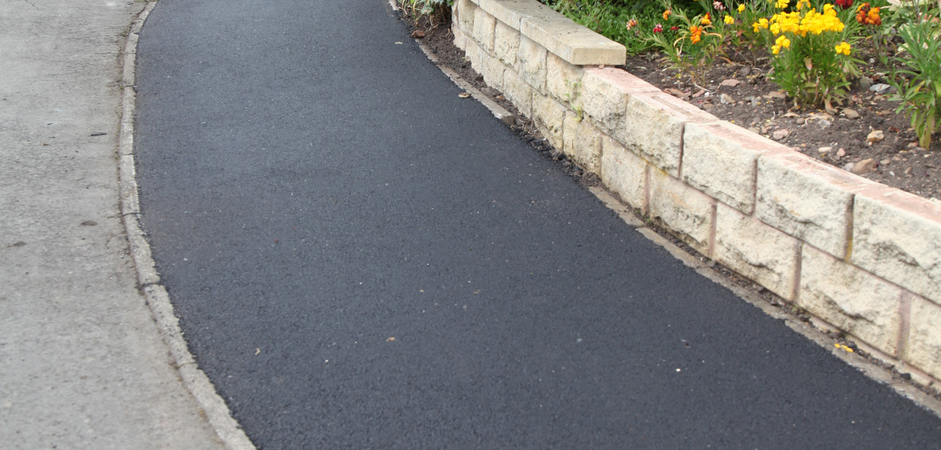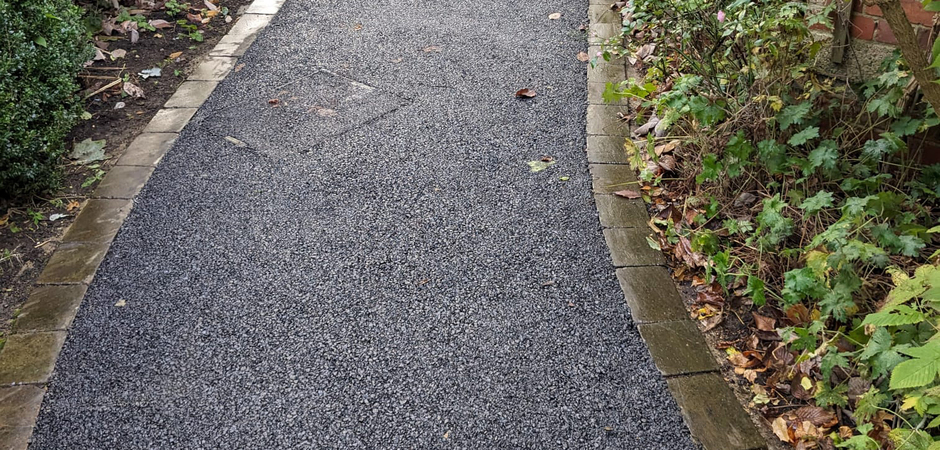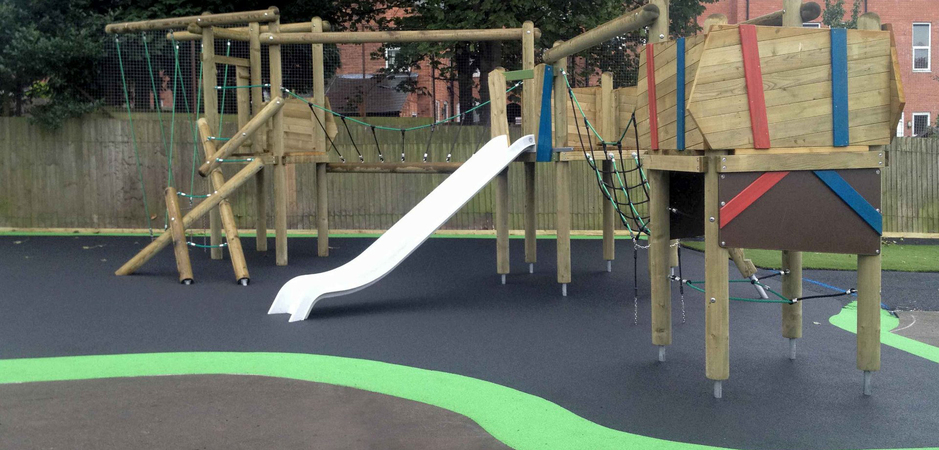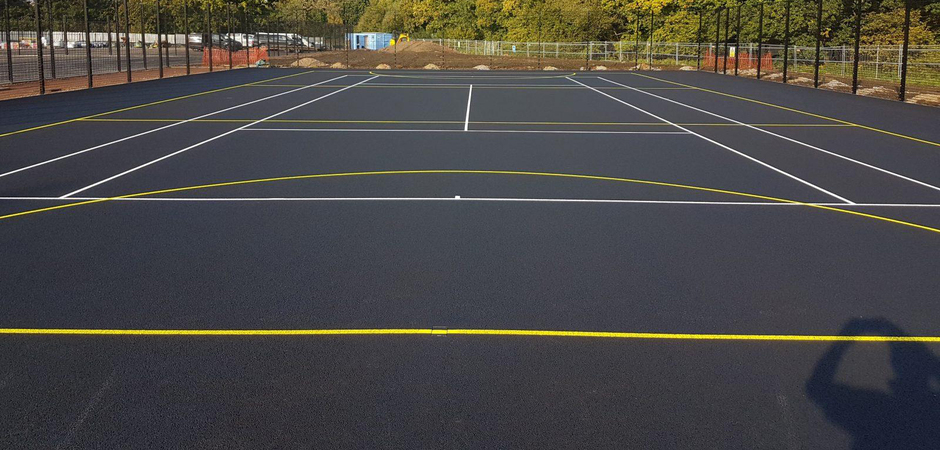Tarmac Restoration
Tarmac Restorer Soaks Into The Tarmac & Asphalt
With the benefits of our help & advice videos, in depth how to articles and customer support, a successful Tarmac Restoration project is now achievable by any capable DIY enthusiast.
TarmaSeal comprehensive range of materials and application tools enables us to supply you everything you need to Restore Your Tarmac. Once restoration has been completed, with some occasional routine maintenance your tarmac should keep looking great for years to come.
Tarmac Restoration Materials & Techniques
If you are planning to carry out a tarmac drive restoration or any other tarmac restoration project for that matter, there are a few things to consider first. Most importantly before ordering materials or initiating any preparatory work is to ascertain whether the surface has reached an overall condition when satisfactory repair is not realistic. Its also important to choose a good quality tarmac restoration paint instead of cheaper bitumen based products that tend not to last.
Regardless of whether the tarmac has been laid as a commercial car park, domestic driveway, path or any kind of associated installation as the surface ages if not maintained the general condition of the material will inevitably start to break down.
Tarmac Drive Restoration Can Save Money
When assessing the general condition of your tarmac, if to any appreciable extent the surface is suffering from any of the following defects it could be worth getting an opinion from a professional contractor. This would help you determine whether tarmac is in a good enough condition that a possible restoration is a viable option. Tarmac drive restoration should be the first option and there is no shortage of tarmac restoration paint products to choose from. Furthermore, there is no point spending time and money on a limited refurbishment project if relaying of the tarmac is the only realistic long-term solution.
As tarmac starts to age it can visually be seen to start to change appearance as the colour is bleached from the surface and the integral resins and oils within the material begin to dissipate. These are both strong indications that the general condition of the tarmac is deteriorating and becoming brittle. Once the tarmac becomes brittle it is increasingly vulnerable to the effects of moisture retention, the negative effects of sunlight, surface wear from vehicles and movement associated with 'freeze and thaw' in the winter. A good quality tarmac restoration paint like TarmaSeal can help protect the surface and make it last much longer.
Avoiding Problems
When these initial signs of failings within the tarmac are recognised, unless a protective sealer or coating is applied every few years, more fundamental and long-term damage will soon become evident. The longer the surface is left without protection the harder these issues will be to treat and the less effective any repairs or application of protective products will be. As further deterioration occurs, this will be easily identified in the form of loose stones on the surface, cracking, edges breaking away and shallow undulations or potholes starting to appear. With the advance in tarmac restoration materials and techniques, all of the aforementioned issues are treatable, as long as they have not become too severe.
After due consideration, if you decide to proceed with your tarmac restoration you can take confidence from the fact that all the materials and tools required are simple to apply and easy to use. There is no reason why even someone with only the basic DIY skills cannot do an excellent job. However, if a tarmac restoration project is carried out on a surface in an appropriate condition, the results can be stunning and save thousands of pounds.
Tarmac Restoration Made Easy
The first step in the tarmac restoration process is effective cleaning of the surface to remove all dirt, green growth, algae and any other contaminants. Overall it is recommended to carry out any tarmac drive restoration work between early spring and late autumn in dry weather conditions. Moreover, temperatures at either end of the thermometer are to be avoided as the tarmac restoration paint can end up drying too quickly and look patchy. Temperatures between 12 and 20 degrees are ideal for carrying out tarmac restoration. If you apply common sense when using any type of tarmac sealer or coating you will not go far wrong. At temperatures below 12 degrees, it is unlikely the sealer will dry quick enough and may be affected by damp or rain before it has cured properly.
At the other end of the scale, if the surface temperature of the tarmac is to warm, the resins within the product are likely to dry to quickly and not have time to properly absorb or bond correctly. When cleaning the surface use of a high-pressure washer is if at all possible to be avoided. This is because jet washing of an old vulnerable, brittle tarmac can lead to wholesale damage and loose stones. With this in mind, if green growth or algae is present not only will pre-treatment of a green growth and algae remover a few days before minimising the risk of damage, it will also make the cleaning process easier and more effective.
Repairing Damaged Areas of Tarmac
After cleaning and once fully dry, any repair work prior to applying a protective coating can be carried out. On the market, there are a variety of crack repair and pothole repair materials, ranging from liquid mastic type fluids to actual Cold Lay Tarmac. Furthermore, in the right hands, all of these products work very well and are long-lasting. To avoid the repaired areas standing out from the remainder and to provide further protection, the application of at least 2 coats of a quality tarmac sealer or coating is recommended. Not only will the sealer re-introduce the lost resins and oils back into the tarmac, but it will also return the surface back to its original colour. Importantly unlike a cheap tarmac paint, a quality coating will not change the textured surface of the material and will leave the treated area looking just like freshly laid tarmac.
Tarmac Restoration Paint
If tarmac restoration is carried out using the correct materials, tools and techniques the surface finish will look uniform and be protected. Tarmac like any external surface will always benefit from a little bit of routine maintenance. Tarmac restoration paint can make an old driveway look like new and should always be the first option. If tarmac restoration paint is applied periodically any thoughts of having the tarmac surface dug up and relayed can be put to the back of your mind.
On our website, you will find dedicated pages on how to repair potholes including the materials and tools required. There are also lots of other types of help and advice including informative 'step by step' tarmac restoration videos. If you require any advice or further assistance before applying our tarmac restoration paint, please feel free to get in touch. Tarmac restoration paint is a cost-effective alternative to having a driveway dug up and replaced.

